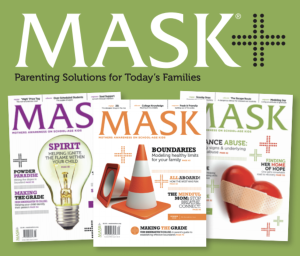
The Giving Family
November 16, 2020
Junior High and Alcohol Abuse
November 20, 2020
When we think of impaired or distracted driving among teens, we often think about alcohol or electronic activities like texting and driving. However, more than 11 million people age 16 and over drove under the influence of illicit drugs, according to the 2016 National Survey on Drug Use and Health. In addition, in an article on CNN.com, “…positive drug tests were more common than the presence of alcohol among the fatally injured drivers who were tested in 2015,” according to a report titled “Drug-Impaired Driving” by the Governors Highway Safety Association and the Foundation for Advancing Alcohol Responsibility.
What can help teens know not to drive under the influence of drugs like marijuana, prescription medication, and illicit drugs? Experts say parental involvement is key.
“It is so critical for parents to be in dialogue with their kids, particularly when they’re learning to drive and in those early years while they are still developing their skills,” says Maria Wojtczak, owner of DrivingMBA, a AAA-approved driving school with locations in Gilbert and Scottsdale. “The best thing to do for your kids is to be a good role model; don’t get behind the wheel if you’re on certain drugs, or if you’ve had anything to drink.”
Wojtczak says it’s important to share statistics with your kids and talk with them about the dangers of being under the influence of anything: drugs, alcohol, electronics—all of which pose a danger to them and to others on the road.
“Do a Google search and you can find a wealth of information on driving while impaired. Also, use apps like Life 360 to keep track of them and their driving—where they are, the speed they’re traveling, if they’re making aggressive maneuvers,” she says. “Some parents think this is too invasive. I say better to be nosy and invasive than going to the morgue and identifying your child in a body bag.”
Wojtczak stresses that teens need to understand that the effects of drugs differ depending on how they interact in the brain and also by the individual person.
“Drivers who’ve used cocaine or methamphetamines, for example, can exhibit aggressive and reckless driving, while someone on marijuana will likely have slow reaction time, impaired judgment of time and distance, and decreased coordination,” she says. “There are certain kinds of sedatives that can cause dizziness and drowsiness, and many will say not to drive while taking this medication. All of these types of impairments can lead to vehicle crashes and severe injuries or death.”
Another point to consider is that drugs are often dangerously mixed with alcohol. So what can parents do to enforce a zero-tolerance policy at home?
“The best thing to do is establish a contract with your teen,” Wojtczak says. “Remind them that driving is a privilege that can be taken away from them by you (if they’re under the age of 18) and by the state.
“Driving under the influence is illegal, irresponsible and dangerous behavior. It’s important that parents are very clear about the rules, and are ready and willing to enforce the rules when their child breaks them.”
Wojtczak also says using tools, such as tracking technology and drug testing, to combat dangerous driving is imperative.
“Be the parent. It doesn’t matter that your child doesn’t want a tracking device in their vehicle or on their phone; they’re too young to make those decisions. It’s our responsibility as their parents to ensure we’ve done everything in our power to keep them safe and alive,” she explains. “Also, drug testing is not out of the realm of possibility. Again, this is about keeping your child safe, and even if they’re unhappy with you now, they will thank you when they become adults and parents.”
By // Michelle Talsma Everson
If you suspect your teen may be using drugs, seek professional help. Some online resources include drugabuse.gov and drugfree.org.
MASK the Parenting Magazine a quarterly publication providing solutions for Today’s Families.
The parenting manual offering solutions to the modern-day challenges families face. From Pre-K
through College stay up to date on the modern day issues families face.
Are you up to date on the issues your child is facing?
MASK Mothers Awareness on School-age Kids offers parenting solutions for today’s families. MASK tackles important topics – from drugs and alcohol to bullying and Internet safety -and gives students, parents and the community the knowledge and tools to manage these potential challenges.
Subscribe today! https://www.tools4teaching.com/product/mask-the-magazine/
Download and share the MASKmatters app now! Made for children, parents, teachers and in Spanish.
Have solutions at your fingertips
Available free on apple and google play links below
Apple https://apps.apple.com/us/app/maskmatters/id1482305692
Google Play
https://play.google.com/store/apps/details?id=com.maskmatters.maskmattersapp&hl=en_US&gl=US




